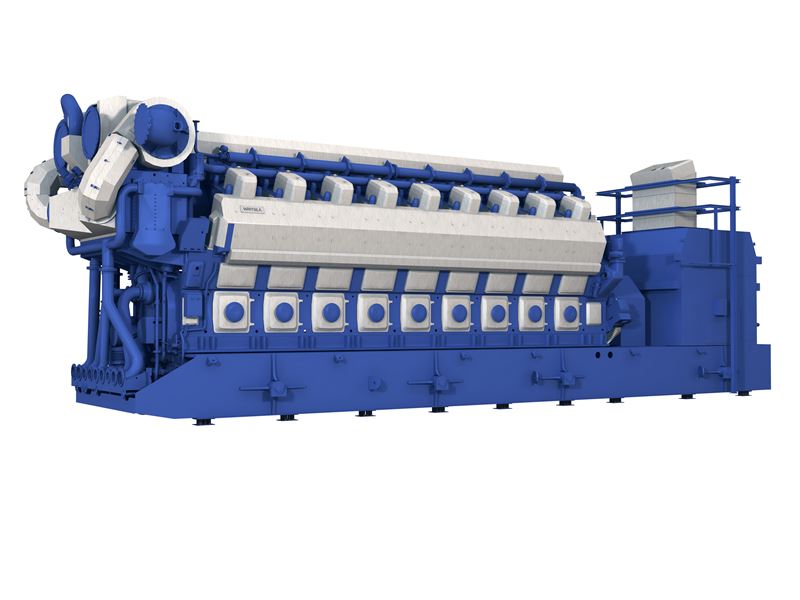Texas Utility Will Add More Peaking Power
The Lower Colorado River Authority (LCRA) said it will build a new 190-MW peaker power plant in central Texas to provide additional dispatchable power to the state’s electric grid. A peaker plant is one that is typically used only for brief periods during times when the demand for power approaches or surpasses the amount of power available.
Growing Demand in Texas
“Texas needs more dispatchable thermal power generation that can be available quickly, depending on market conditions and demand,” Phil Wilson, LCRA general manager, said in a statement announcing the decision. “As our state faces the challenge of bringing more power to a growing population, I am proud that LCRA is continuing its legacy of providing vital services to Texans.”
The LCRA was created by the state legislature in 1934 and provides a multitude of services to its customers and communities. In addition to producing and delivering electric power, the LCRA also manages the lower Colorado River, provides a reliable water supply, manages a public parks system, and supports community development. In its early days, the LCRA built a chain of dams along the Colorado River and brought power to rural central Texas for the first time.
The new plant will be the LCRA’s second peaker plant. The first is a 184-MW natural gas–fired facility in Fayette County that was built in 2010. The new facility will have 10 Wärtsilä 50SG natural gas–fueled reciprocating engines (Figure 1). Wärtsilä says the engines consume “little to no water,” which it says is important in an area of Texas often affected by drought. The new peaker plant is expected to become fully operational in 2025.

“We sometimes need more power that can be available quickly, depending on market conditions and demand. We believe Wärtsilä’s technology, experience and technical know-how will be a good match with our plans to provide reliable, cost-effective power to our customers and the Texas power grid,” Randa Stephenson, LCRA chief commercial officer, said in a statement. “This new dispatchable peaker power plant with Wärtsilä technology will support the Texas power grid within minutes.”
Many Texans continue to fear power outages, such as the crisis that occurred in February 2021, when Winter Storm Uri left large parts of the state without electricity, heat, or water. According to some estimates, that event caused more than 700 deaths due to blackouts. Many lessons were learned during follow-up investigations and measures have been put in place to help preclude future incidents.
Hot summer temperatures can also stress the Texas grid. Last summer, the Electric Reliability Council of Texas (ERCOT) warned its grid participants of a possible reserve capacity deficiency, owing to demand surges tied to high temperatures. The new LCRA peaker plant will help the state’s power system in that regard.
Engines Becoming More Prominent in American Power Grids
Wärtsilä says it has installed more than 70 engine power plants in the U.S. since 1981. This year, the company has already announced orders from at least three other utilities in the Americas.
On Jan. 10, Wärtsilä reported an order had been placed by “a major American investor-owned utility in the Upper Midwest.” That deal will result in two new power plants utilizing internal combustion engine technology, specifically, Wärtsilä 34DF dual-fuel engines. The first plant will have an output of 28 MW from three engines, while the second will provide 47 MW from five engines. All eight engines are expected to run on natural gas, but they will have the capability to use light fuel oil if natural gas is unavailable. The Wärtsilä engines were reportedly selected “primarily for their grid-balancing capabilities as the utility expands its integration of renewable energy, notably wind and solar.”
On Jan. 25, Wärtsilä announced it would supply engines for Basin Electric Power Cooperative’s Pioneer Generation Station Phase IV power plant project in North Dakota. That plant will include six Wärtsilä 50SG gas engines, having a combined net output of 108 MW. Basin Electric reportedly needs the flexible gas generation “to balance the inherent variability of energy from renewable sources.”
Wärtsilä also announced a deal on Jan. 27 with a major engineering, procurement, and construction (EPC) contractor to supply engines for a combined cycle plant in Latin America. The plant is expected to provide baseload power to the grid, but the rapid start-up flexibility of the engines will also enable it to take on a grid-balancing role as the system’s share of renewable energy increases. The station will have 18 Wärtsilä 50SG gas engines, with a simple cycle output of 339 MW, and an additional 350 MW of capacity when operating in combined cycle mode. Wärtsilä said the customer would develop the combined cycle configuration using three steam turbines, which, it said, “further improves the plant’s flexibility and will operate at maximum efficiency even at part loads.”
“The energy sector is in the midst of a rapid transformation where flexibility is becoming all important,” Risto Paldanius, vice president for the Americas with Wärtsilä Energy, said in a statement issued to POWER.
“The situation in Texas reflects very clearly these changes, with sharply rising demand being served by an aging fleet of inflexible power plants. Grid balancing is also needed in order to respond to increasing inputs of energy from renewable sources, and Wärtsilä technology provides this,” he added.
—Aaron Larson is POWER’s executive editor (@AaronL_Power, @POWERmagazine).